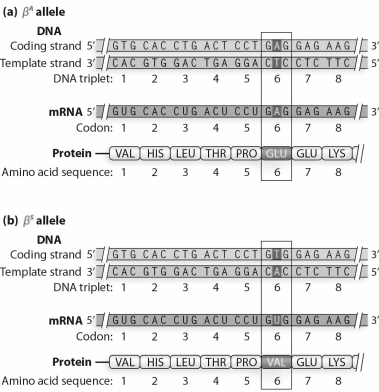Multiple Choice
At a biological level,βᴬβˢ heterozygotes suffer fewer cases of malaria than βᴬβᴬ homozygotes,and when they do get malaria,their disease is less severe.What is the biological explanation for the heterozygous advantage? 
A) The βᴬβᴬ homozygotes have a shortened average life span of their red blood cells,and the shorter RBC life spans interrupt the developmental cycle of Plasmodium larvae by causing the parasites to mature and reproduce rapidly.
B) The βᴬβˢ heterozygotes have a shortened average life span of their red blood cells,and the shorter RBC life spans interrupt the developmental cycle of Plasmodium larvae by preventing many of the immature parasites from reaching maturity.
C) The sickle-cell shape of the RBCs in βᴬβˢ heterozygotes causes the Plasmodium larvae to become stuck in the RBC aggregates and prevents reproduction.
D) The anemia associated with SCD makes the βᴬβˢ heterozygotes less attractive to mosquitoes,so they experience fewer mosquito bites and less opportunity for infection by Plasmodium larvae.
E) The βᴬβˢ heterozygotes are bitten by mosquitoes less frequently,and when they are infected,the sickle-cell shape of the RBCs in βᴬβˢ heterozygotes causes the Plasmodium larvae to become stuck in the RBC aggregates and prevents reproduction.
Correct Answer:

Verified
Correct Answer:
Verified
Q9: Ingram examined hemoglobin structural variation by breaking
Q15: Sickle cell is a codominant disease,meaning that
Q17: Hemoglobin,the protein responsible for binding and transporting
Q18: Molecular charge is an important characteristic influencing
Q19: Northern blotting is not useful in detecting
Q21: The same DNA probe used to measure
Q24: Which of the following images represents the
Q28: Hemoglobin is made up of four proteins
Q35: In contrast to the nucleic acid probes
Q41: You have digested a molecule of DNA